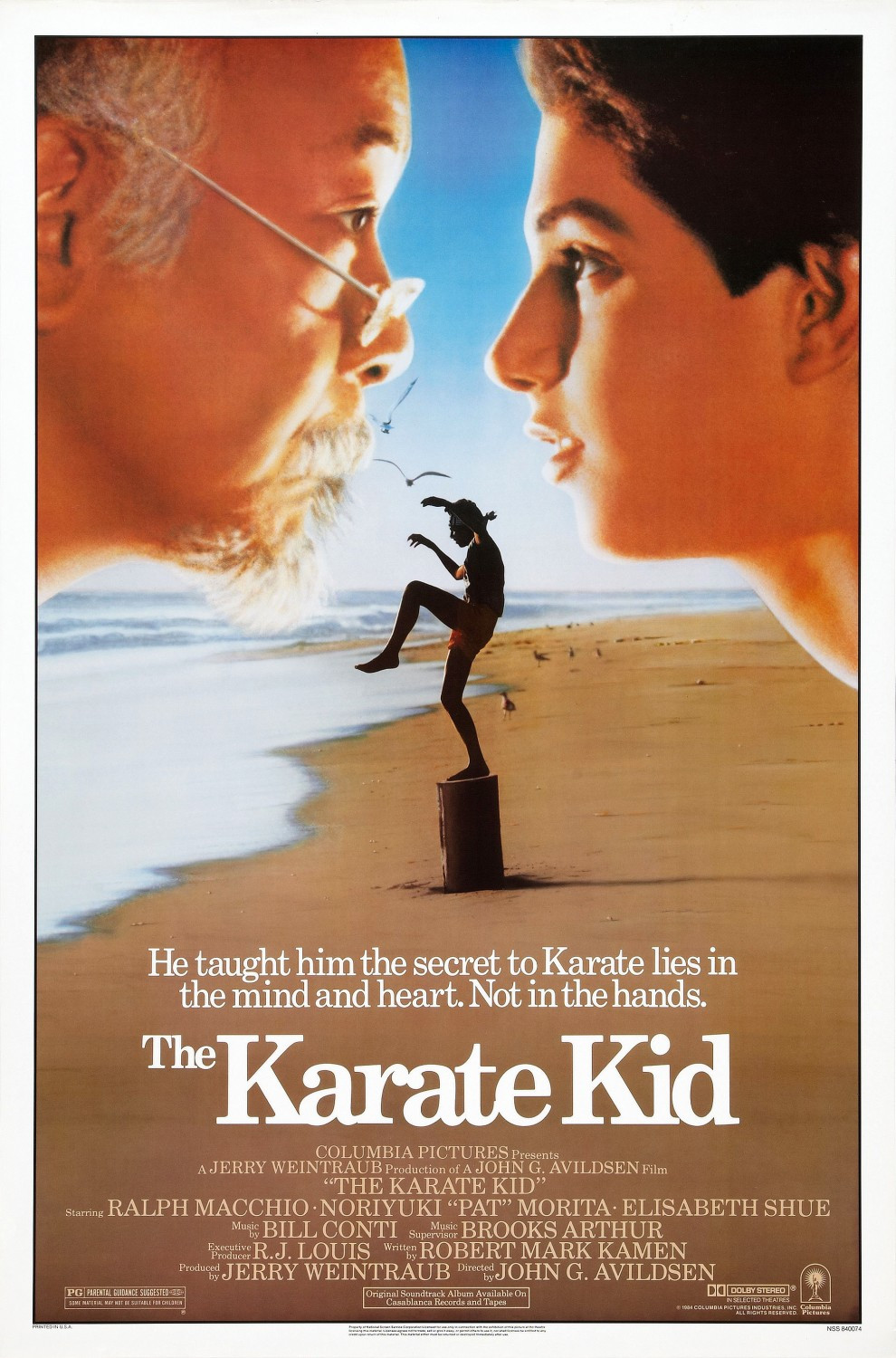 The Karate Kid 1984 poster
The Karate Kid 1984 poster
“The Karate Kid,” a film that resonates across generations, isn’t just a story about overcoming bullies and learning karate; it’s a testament to the power of masterful direction. While the iconic performances of Ralph Macchio as Daniel LaRusso and Pat Morita as Mr. Miyagi are central to its enduring appeal, the guiding hand of director John G. Avildsen is what truly solidified its place as a cinematic classic. Avildsen, already acclaimed for his Oscar-winning direction of “Rocky,” brought a similar grounded realism and emotional depth to “The Karate Kid,” transforming a simple underdog story into a film that continues to inspire and captivate audiences more than three decades later.
John G. Avildsen was no stranger to crafting stories of resilience and triumph. Prior to “The Karate Kid,” he had already etched his name in Hollywood history with “Rocky” (1976). This boxing drama, lauded for its raw emotion and authentic portrayal of struggle, earned Avildsen the Academy Award for Best Director. His ability to draw powerful performances and create an immersive experience for the viewer was evident. When Avildsen took the helm for “The Karate Kid” in 1984, he brought this established expertise to a narrative that, on the surface, seemed geared towards a younger audience. However, Avildsen recognized the deeper potential within Robert Mark Kamen’s script. He saw beyond the karate tournaments and training montages, focusing on the human story at its core – Daniel’s vulnerability, Miyagi’s wisdom, and the universal struggle for belonging and self-respect.
Avildsen’s directorial approach in “The Karate Kid” is marked by a commitment to realism and character-driven storytelling. He avoided flashy cinematic techniques, instead opting for a style that felt genuine and relatable. This is evident in the way he portrays Daniel’s initial struggles in California. Moving from New Jersey, Daniel is immediately an outsider. Avildsen captures the discomfort and alienation of being the new kid, making Daniel’s vulnerability palpable. When Daniel faces the Cobra Kai bullies, led by Johnny Lawrence (William Zabka), the fear and helplessness are realistically portrayed, drawing the audience into Daniel’s emotional journey. This authenticity makes Mr. Miyagi’s eventual intervention all the more impactful and cathartic.
The heart of “The Karate Kid” lies in the relationship between Daniel and Mr. Miyagi, and Avildsen masterfully nurtured the chemistry between Macchio and Morita. He allowed their performances to breathe, emphasizing the subtle nuances of their interactions. The seemingly mundane training exercises – waxing cars, painting fences, sanding floors – become profound moments of learning and bonding under Avildsen’s direction. He uses these sequences to build anticipation and understanding, allowing the audience to gradually realize, alongside Daniel, the deeper purpose behind Miyagi’s unconventional methods. This slow-burn reveal, a hallmark of Avildsen’s pacing, enhances the emotional payoff when Daniel finally grasps the true essence of karate and self-defense.
Avildsen’s skill in eliciting strong performances extends beyond the central duo. He guided William Zabka to portray Johnny Lawrence not as a one-dimensional villain, but as a complex character shaped by the aggressive philosophy of his sensei, John Kreese (Martin Kove). Even Elisabeth Shue, as Ali Mills, transcends the stereotypical role of the girlfriend, embodying a spirited and independent young woman. Avildsen’s direction ensured that each character, even in supporting roles, contributed to the film’s rich emotional tapestry. Martin Kove’s portrayal of John Kreese is particularly chilling, embodying a ruthless and militaristic approach to karate that starkly contrasts with Miyagi’s balanced and spiritual philosophy. This contrast is crucial to the film’s thematic depth, highlighting the dangers of aggression without discipline and respect.
John G. Avildsen’s direction in “The Karate Kid” is characterized by its understated brilliance. He didn’t rely on cinematic tricks or over-the-top action sequences. Instead, he focused on the core elements of compelling storytelling: relatable characters, authentic emotions, and a narrative that resonates with universal themes of perseverance, mentorship, and self-discovery. His work on “The Karate Kid,” much like “Rocky,” showcases his talent for finding the extraordinary within the ordinary, transforming a coming-of-age story into a timeless and inspiring film that continues to win over new audiences. Avildsen’s legacy as a director is firmly cemented by films like “Rocky” and “The Karate Kid,” movies that not only entertained but also touched hearts and left a lasting impact on popular culture, proving his mastery in crafting films with both broad appeal and enduring emotional resonance.
